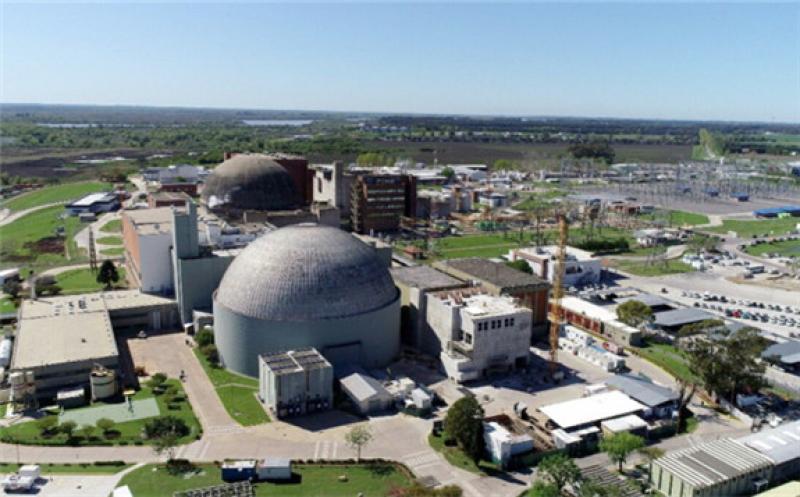CAREM - the name is taken from Central ARgentina de Elementos Modulares - is Argentina's first domestically-designed and developed 25 MWe nuclear power unit. The prototype of the small pressurised water reactor design is being built at a site adjacent to the Atucha nuclear power plant. First concrete was poured for the reactor in February 2014, marking the official start of its construction. At least 70% of the components and related services for CAREM-25 are to be sourced from Argentine companies.

Contractor Techint Engineering & Construction reportedly halted work on CAREM-25 last November, citing late payment from the government, design changes and late delivery of technical documentation.
The used fuel storage facility is a key work for the continued operation of the Atucha 1 and Atucha 2 nuclear power plants, while the Atucha 1 life extension project will allow the first nuclear power plant of Latin America to continue operating. Atucha is home to two of Argentina's three operating nuclear power plants, all pressurised heavy water reactors. With total generating capacity of 1627 MWe, the three units - Atucha 1 and 2 plus Embalse - provide about 10% of the country's electricity.
The decision to resume work on the projects was taken on 17 April during a videoconference of NA-SA's shareholders, the majority shareholder being the national state.
Lanziani, who participated in the meeting, said: "We are convinced that the emphasis must be placed on continuing with our nuclear plan and having nuclear power generation as one of the power reserves. This sector is fundamental and vital for the interests of the country". He added, "In moments of crisis such as this, the importance of the role of the State arises and, in the case of nuclear generation, it shows energy resilience, as it is in sight with current indicators."
The shareholders also decided to recreate the Nuclear Project Management Unit, which will report to the NA-SA's board of directors and which will have the necessary administrative tools for the execution of the projects.
NA-SA noted that with the decision to resume work, "The company returns to position itself in the management of nuclear projects and reactivates public works that were paralysed due to breaches by contractor companies. This path opens up the possibility of increasing the level of activity, diversifying work areas and generating future projects."